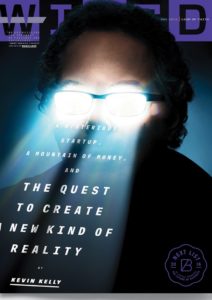According to a 2016 SGIA Industry Survey Report, 15.6 percent of graphics producers rated ad agencies as their top declining market. In contrast, the four biggest growth markets were interior decorators/designers (55.7 percent), health care institutions (55.6 percent), environmental graphics (53.5 percent) and hospitality services (46.6 percent).
In my opinion, the decline of ad agencies as growth customers reflects three interrelated trends: (1) the rise of customer experience design; (2) the growth of in-house design teams; and (3) the emergence of different types of agencies for new types of creative services.
As I researched career opportunities for designers for my Creatives at Work blog, I discovered several articles that suggested the traditional advertising agency business model is archaic.
Instead of hiring ad agencies to buy ad space and design campaigns, companies today are hiring multiple agencies to help their in-house teams with specific elements of “customer experience design.”
Customer experience design determines how customers discover a product, learn more about it, buy it, and use it. The goal of delivering a consistently great customer experience is to build a following of loyal customers who will recommend a company’s products to colleagues, friends, and families.
 While paid advertising plays a role in customer experience design, it’s becoming less important. Customer experience is also affected by product performance, packaging, and ease of use as well as customer support, and in-person interactions in stores and at events. Other customer experience tools include personalized communications and the delivery of educational content that is relevant to the customer’s interests.
While paid advertising plays a role in customer experience design, it’s becoming less important. Customer experience is also affected by product performance, packaging, and ease of use as well as customer support, and in-person interactions in stores and at events. Other customer experience tools include personalized communications and the delivery of educational content that is relevant to the customer’s interests.
Recommended Reading
In the article “Are Branding Agencies Still Relevant?” on fastcodesign.com, Paul Woods argues that the traditional top-down “brand-development” strategy is a waste of time: “Increasingly, a brand is defined by what a product actually delivers, not by how the marketers tell us how we should feel about it.”
He points out that many startups forgo lengthy brand-definition processes in favor of getting their products out into the marketplace. After the product is launched, the goal is to deliver positive customer experiences that can help build a community of fans. The start-up can then use real customer insights to refine the products and articulate the brand.
In UX magazine, Chuck Longanecker explains why “Customer Experience is the Future of Design.” He writes: “Experience design (XD) is not just a medium, like an advertising campaign or online app, but rather a strategy to keep customers engaged with a brand through impactful interactions.” It’s a strategy in which everyone in at the company must deliver a unified customer experience: “The idea is to wow customers at every point in their journey.”

The ultimate customer experience may involve virtual reality. In Kevin Kelly’s fantastic Wired magazine article about virtual reality, mixed reality, and augmented reality, he quotes an neuroscience expert who says, “VR talks to our subconscious mind like no other media.”
Kelly writes that virtual reality technology “forces you to be present — in a way that flat screens do not —so you gain authentic experiences, as authentic as real life. People remember VR experiences not as a memory, but as something that happened to them.”
New Types of Agencies Are Forming
While many companies are becoming less reliant on paid advertising and ad agencies, most businesses do need help navigating the many complexities and opportunities in customer experience design.
New types of agencies (and print-service providers) are stepping up to help manage complex projects, test emerging technologies, or provide specialized skills.
Today, some agencies focus on creating digital products such as apps, websites, videos, and virtual reality experiences. Others coordinate the design, execution, measurement, and analysis of integrated multi-channel marketing campaigns.
Members of the Society for Experiential Graphic Design collaborate with architects and interior designers to shape content-rich, experiential spaces for stores, airports, museums, campuses, healthcare facilities, and offices. They blend printed and digital signage, artwork, displays, and information kiosks into buildings and public spaces in a way that ensures a consistently positive experience for visitors and employees. (Note: The Society for Experiential Graphic Design was formerly known as the The Society for Environmental Graphic Design. The update from “environmental” to “experiential” indicates how quickly agencies and design studios are evolving.)
A Talent Drain
With so many new opportunities emerging on in-house teams or for new-era agencies, it’s not surprising that many young designers are leaving traditional advertising agencies behind. One industry analyst believes entrenched Boomer-age executives in ad agencies have been slow to adopt new business models and capitalize on changing technologies.
In a column for Communications Arts magazine, designer Ernie Schenck asks: “If Advertising Is So Great, Why Are We So Unhappy?”
Schenk writes: “An increasing number of young creatives are turning not to advertising, but to companies like Google, Facebook and Twitter, companies where creative freedom is virtually infinite, where their ideas are more likely to result in something tangible, and where, rightly or wrongly, there’s a sense of purpose – compared with the frequently suffocating atmosphere of agencies.”
In Adweek, Jason Zada explains “Why It’s Time to Kill Advertising as We Know It and Start Building ‘StoryWorlds.” Zada believes ad agencies should think like Hollywood and hire “dreamers and executors” who can create story-worlds that play out a story narrative across multiple platforms.
Instead of producing TV commercials or negotiating product placements in TV shows or movies made by Hollywood, ad-agency creative teams could help brands produce their own feature films, short series, live streaming events, virtual-reality experiences, experiential events, museum exhibits, and more.
The creative team might include a producer, writer, director, designer, story architect, and technologist.
Print-service providers should pay close attention to shifting business models within all sorts of creative services agencies, because printed graphics will continue to be needed.
As brands become more active in creating entertaining and educational experiences for customers, print-service providers that can produce a full range of large-format graphics, custom interiors and backdrops, digital signage, and 3D printed objects may be well-positioned to benefit.
